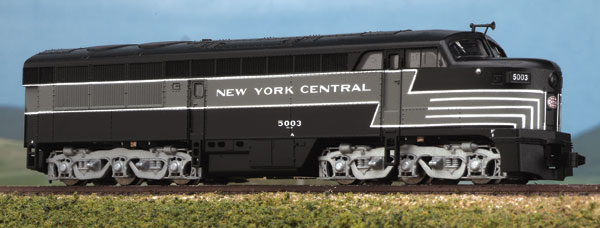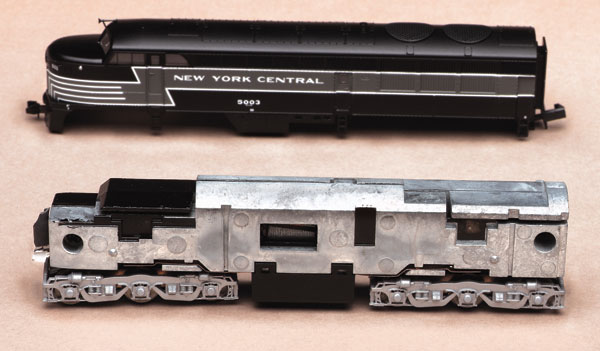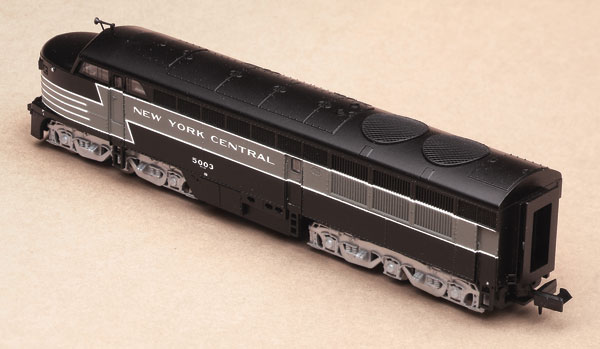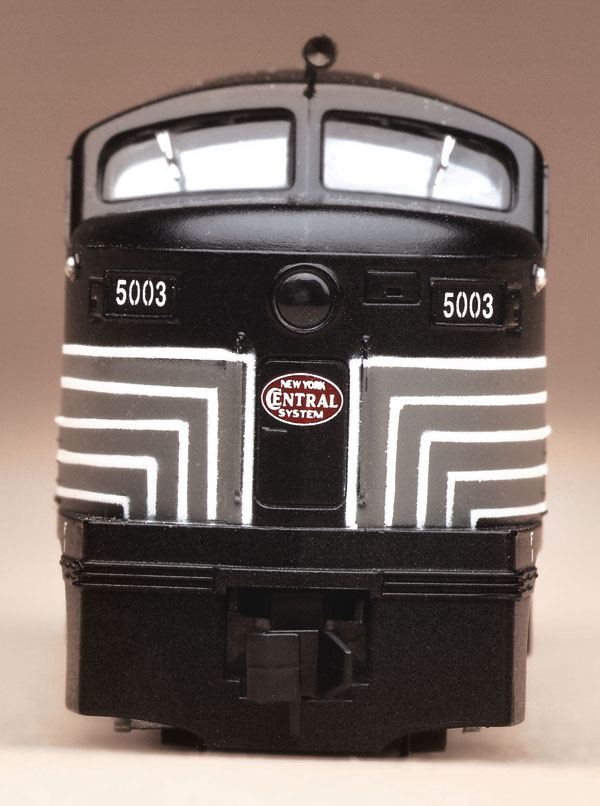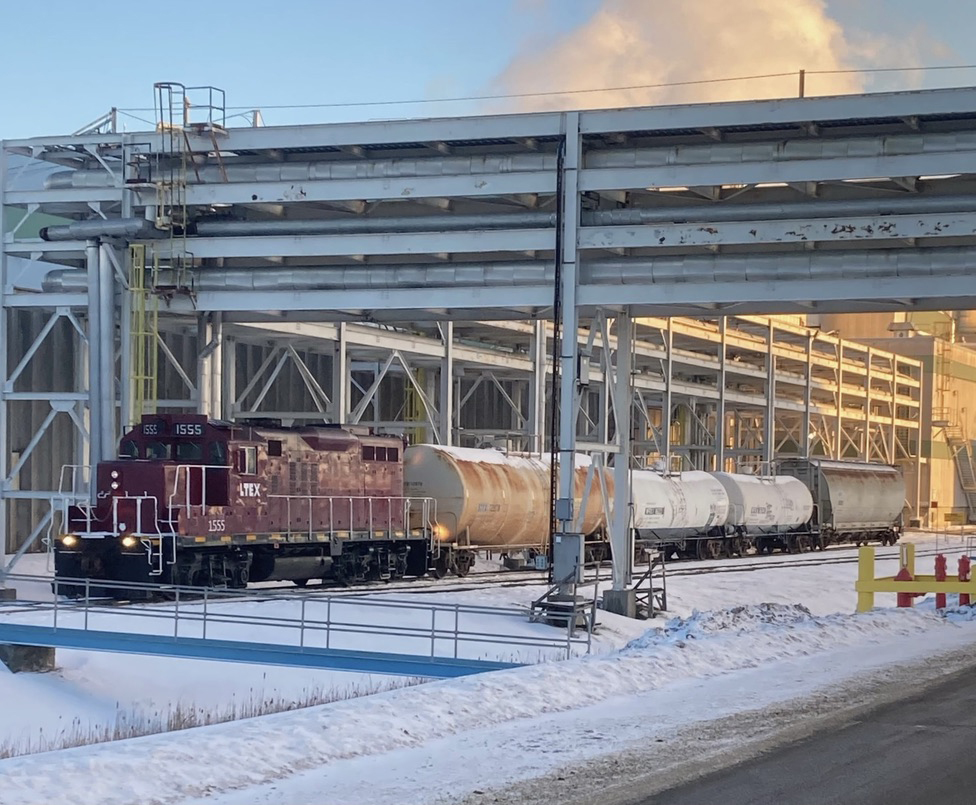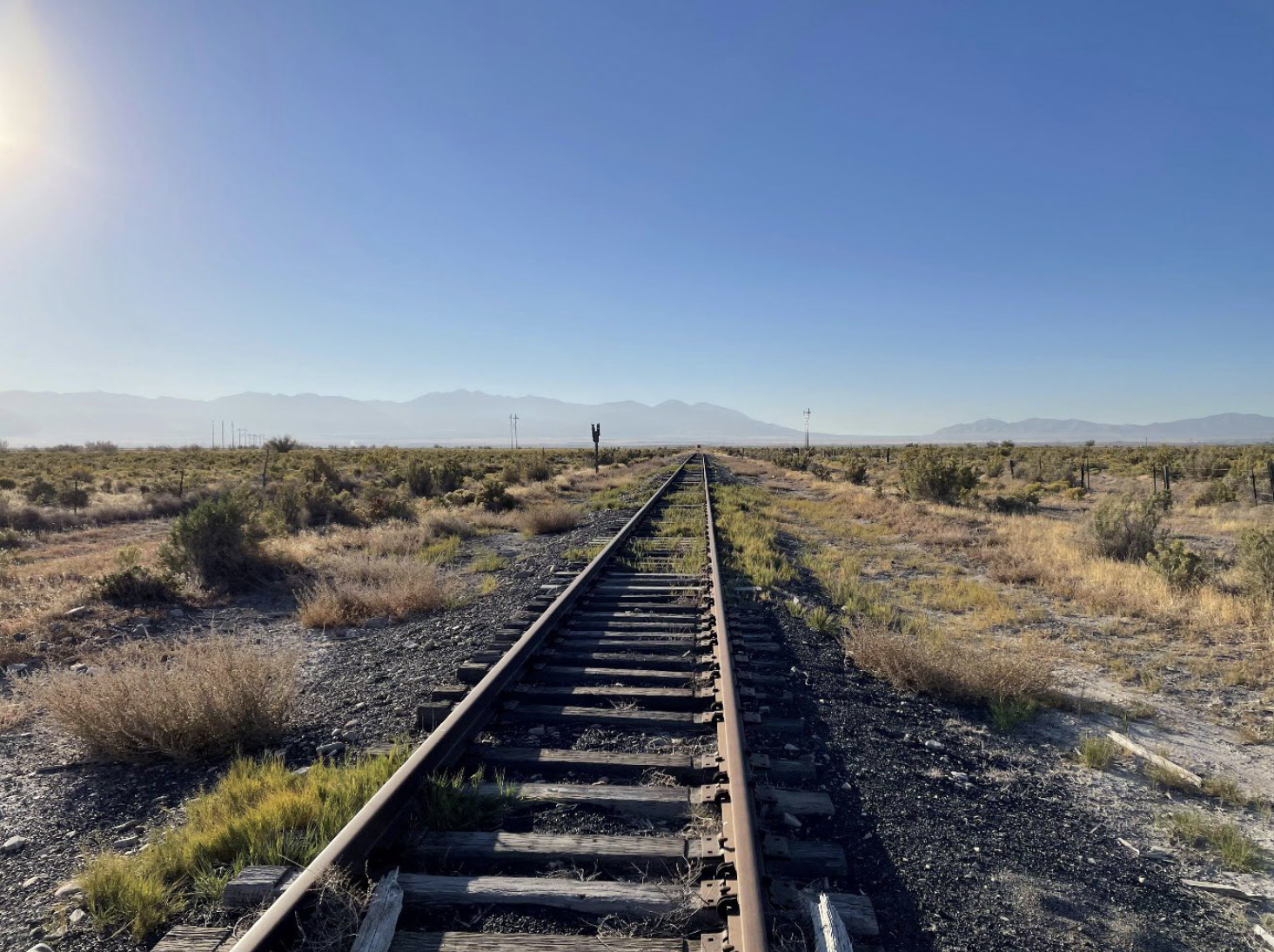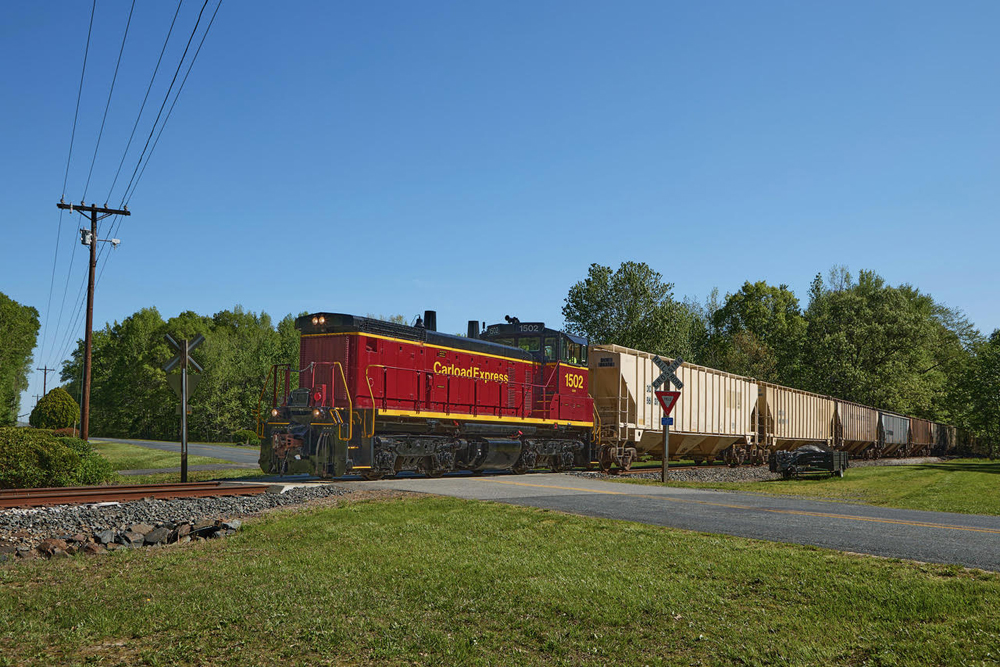The Erie-built was FM’s first attempt to build a road locomotive using its powerful opposed-piston diesel engine, which had earned kudos in naval service. Unfortunately, success on the rails eluded FM due to maintenance woes plus a marketplace dominated by Alco and the Electro-Motive Division.
“Erie-built” is derived from the fact that General Electric’s Erie (Pa.) plant constructed all 82 cab units and 29 boosters for FM between December 1945 and February 1949. Life-Like offers A and B units decorated for all of the railroads which bought them, except for the Chicago & North Western, which only had A units.
Life-Like’s model duplicates the prototype’s wheel arrangement and comes with the conventional drop-equalizer trucks used on some Erie-builts. The General Steel Castings trucks were similar to the trucks under Alco PA-1s, so Life-Like has used the Alco trucks on these models to reduce costs. These trucks are well-molded with good relief detail, but omit FM’s middle brake cylinder to provide clearance for the truck to swivel behind the cab side ladders on sharp model railroad curves.
This all-new model is made in China and is built around a vertically split, cast-zinc alloy frame. It has a five-pole, skew-wound, double-ended motor that’s isolated from the frame except for the two brush holder contacts.
Power from the rails is conducted from all 12 wheels through brass bearing wipers contacting the steel axles. Phosphor bronze pickups transfer the current to the frame halves.
The wheels are chemically darkened and meet National Model Railroad Association standards for gauge and flange depth. However, some wheel treads on our sample were slightly narrow.
The front coupler is a dummy knuckle-style and its height is low. The rear coupler is a Rapido-style that’s body mounted for easier replacement.
The Erie-built’s major dimensions closely match drawings published in the Model Railroader Cyclopedia: Vol. 2, Diesel Locomotives (Kalmbach). The body shell’s mold work nicely captures the lines and nuances of the prototype.
Painting and lettering are excellent throughout, and the locomotive designation under the road number on the side may be the smallest I’ve ever seen, but it’s clearly legible under magnification. Life-Like has even applied silver paint on the classification light lenses, saving some of us an aggravating task.
The headlight is non-directional and glows quite brightly at 12 volts DC. You may want to replace it with a 1.5-volt bulb or an LED for use with a decoder.
Performance is where the model really shines. Although somewhat noisy at the middle and higher speeds, it needs little current to start moving and keep moving. Weighing in at a robust 5.75 ounces, a single unit is capable of pulling 46 free-rolling freight cars on straight and level track. The model will negotiate a 9¾”- radius curve, but a locomotive of this size looks better operating on broader curves.
Despite the lack of easy DCC conversion and presence of a Rapido-style coupler, N scalers looking for classic first-generation motive power will be quite pleased with this model.
Manufacturer:
Life-Like Products,Inc.
1600 Union Ave.
Baltimore, MD 21211-1998
www.lifelikeproducts.com
Features:
Drawbar pull: 1.92 ounces
Engine weight: 5.7 ounces
Minimum radius: 9¾”
Road names:
- Single A unit:
Chicago & North Western (no. 6001A) Chicago & North Western (no. 6001B)
Kansas City Southern (no. 62C)
Milwaukee Road (no. 21B)
New York Central (no. 5003)
Pennsylvania (no. 9473A)
Santa Fe (no. 90L)
Union Pacific (no. 705) - A and B units:
Kansas City Southern (nos. 62A and 62B)
Milwaukee Road (nos. 21A and 21C)
New York Central(nos. 5002 and 5101)
Pennsylvania (nos. 9472A and 9472B)
Santa Fe (nos. 9472A and 9472B)
Union Pacfic (nos. 704 and 704B)
Undecorated





